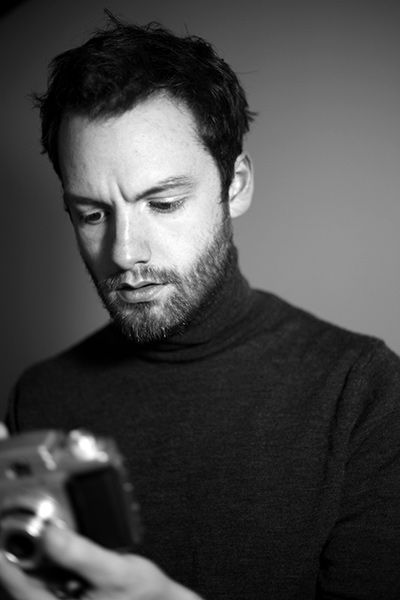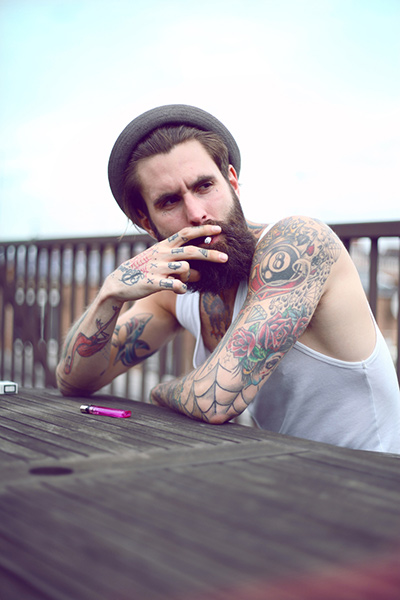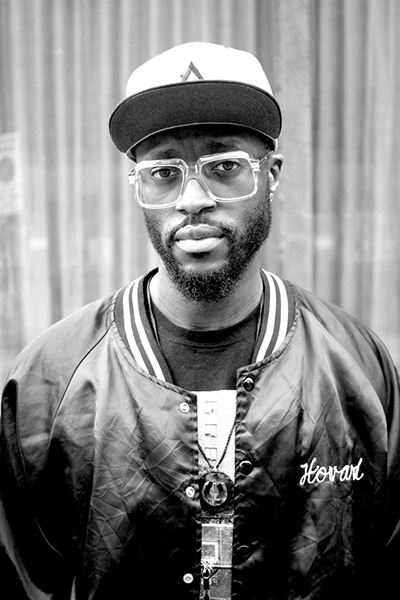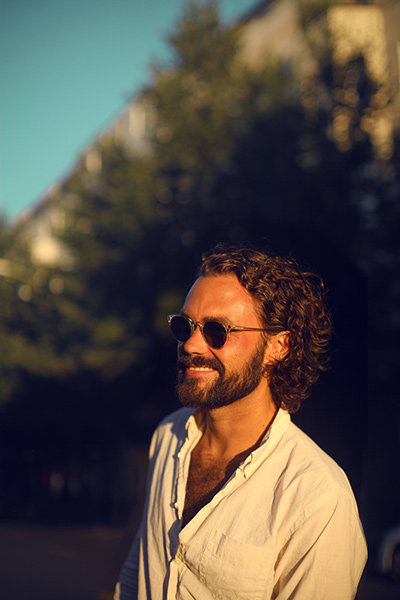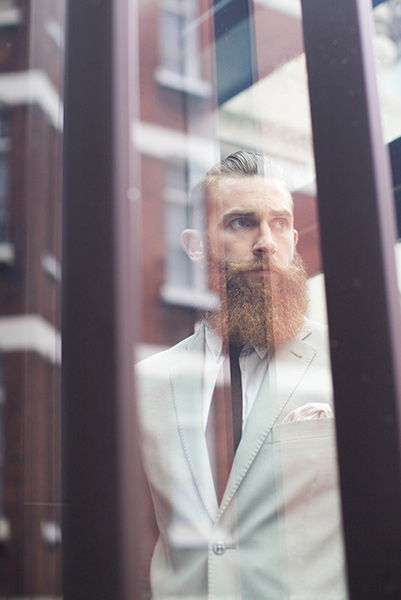Share
Establishing a Successful Photography Brand with Jonathan Daniel Pryce
This piece originally appeared in our guide Breaking into Fashion Photography– for the full article download the guide here. Fashion photograph...
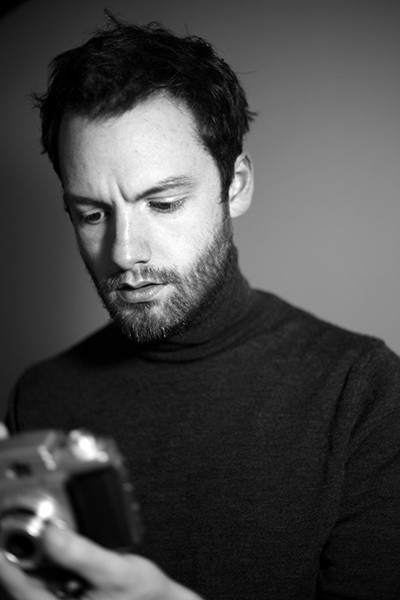
This piece originally appeared in our guide Breaking into Fashion Photography– for the full article download the guide here.
Fashion photographer Jonathan Daniel Pryce first made a name as a blogger in 2008 with Le Garçons de Glasgow, Glasgow, Scotland’s leading street style blog. He shoots for major fashion brands and retailers, trend analysis agencies and magazines like Men’s Health, GQ and Esquire. Here he shares how he used blogs, social media and old-fashioned networking to carve out a niche as an on-trend menswear photographer.
How did you get started in photography?
I actually studied marketing, and I did a year abroad as part of my degree in New York at the Fashion Institute of Technology. It was the same year that Scott Schuman had his first exhibition with The Sartorialist, the street style blog. I thought it was a great way to showcase people and a city and have this narrative between style and what was happening at a certain time and place. I took courses in photography to supplement my degree, and when I returned to Glasgow, I set up a blog called Le Garçon de Glasgow to document street style in Glasgow.
I started taking photographs every day, which was a big step between working in these extra classes and actually doing something where I thought there was a demand to see work on a regular basis. It was probably the biggest learning curve I had in photography. It started to snowball quite quickly, because it was around 2007 when blogging was just starting. Brands were trying to capitalize on this new thing without really knowing how to use it. So I did a lot of brand collaborations quite early on, which gave me insight into how clients wanted to work with me and how great the opportunity of blogging was in terms of getting your name out there.
How did you start to develop your brand as a menswear photographer?
After I moved to London, I changed the blog from Le Garçon de Glasgow to GarconJon.com and started doing only men’s lines. I focused on menswear because it was something I was more interested in and also it would stand out more and have a stronger voice. Then I started the new project, 100 Beards, on Tumblr. Those two things cemented me as being focused on menswear. That step forward naturally led to more clients in menswear learning about me and hiring me.
How would you describe your work?
Because I started with street style, there are a few things you can really see in my work. I think the subject is really important—it’s really about the person equally, if not more, than the clothes they’re wearing, even when I’m working with a brand. A lot of time with clients, I’ll either suggest using real models or I’ll intentionally use models who I think have an interesting story, or their face tells an interesting story. I also try to shoot on location because I love using different environments, and I love the challenge of working with the weather and lighting. So I think “authentic” would be one of the key words to describe my work.
What are your tips for starting a fashion photography blog today? How do you stand out now that there are so many?
Choose to blog about something that you’re really passionate about. That sounds like an obvious tip, but it’s true, because if you’re going to build up a following, or even just to get a blog looking good, it takes a long time. It’s a lot of time that isn’t paid directly and you don’t necessarily get a huge response at first. The second thing is to know the market already. For example, with the beard project, that was just great timing, where I hit a trend on the head and no one else was doing a blog like that. So I was aware of what was happening in the blogosphere and I capitalized on that gap as well as something that had a larger cultural conversation going on. It was proof that if you select a topic that you’re both interested in and also has a wider interest, then this snowball will grow in size a lot faster.
Also work hard at it. Blogging is a good example of the more hours you put in the more you get out of it, so it needs to be consistent. You need to be building a relationship with your readers and doing it as regularly as possible. There’s not point of posting once a month because no one is going to come back and check.
How do you build a following?
I’d recommend using as many social media channels as possible—Instagram, Twitter, Facebook—and also experimenting with things like Vine and YouTube. I would say select three or four channels; I’m on all of those channels and I’d say two or three out of those five I use regularly. Instagram is a key one for now—I’ve been on Twitter for six years and I’ve got 5,000 followers, but I’ve been on Instagram for a year and have 11,000 followers.
I’d also recommend connecting to other users who have similar interests. Maybe you like red t-shirts, so follow other people who like red t-shirts. Start a conversation with them and ask them to retweet you or reblog your posts to try to get their followers seeing what you’re doing.
I also think people forget about connecting with people in real life. I’ll go for a coffee with other bloggers, or I go to events, and if I see someone I recognize from Instagram, I’ll introduce myself. As much as social media is great, reinforcing it with real-life contact is invaluable.
What is your current strategy on GarconJon.com?
GarconJon.com is a place for me to keep a dialogue going and keep my clients seeing what I’m up to. I post mainly street style; the majority of photographs are from fashion weeks in London, Milan and Paris. I also post about products I’m interested in. This is a business arrangement in a way because some of the products I choose are from brands that I work with. I also shoot my own editorial. That’s my experimental work—me being able to work with models I want to or working with a stylist I’m interested in or just being creative and fun, which always gives me fresh work to show clients. Then the other stuff I post is brand look books, exclusive to my blog. It’s where I work with a brand to shoot something they wouldn’t necessarily use as their main campaign images but are still interesting and sharable across social media.
What are a few tips you wish you knew when you started?
When I first started, I wish I’d known what client expectations were. A lot of the time I get briefs that are really broad, and that’s great because creatively I can do what I want, but that means I can potentially have 200 images I love and 199 of them could not be what the client wants. So pen down exactly what the client wants, over deliver as much you can so they’re impressed and want to work with you again, but don’t be taken advantage of.
On top of that, don’t be scared to ask for money. A lot of the time photographers work for free, and I did too. I think it’s definitely something that you have to do, and I still work for free on things I want to do. But I know a lot of photographers who have been working for free for way too long. There’s kind of an expectation in creative industries that it’s something we like to do so we’ll do it for nothing, which is not right.
I think having a strong voice in terms of your style isn’t something you should shy away from. Early on I decided that I wasn’t going to try to be everything to everyone. I can do studio shoots, event photography, street style or location shoots, but I’m not going to put that all on my website because I don’t enjoy every one of those things equally and I don’t want to be seen as a jack of all trades and master of none. If you take street style as an example, rarely do I show someone staring at a camera in the middle of the street, which is what the majority of street style photography is about. I tend to do something which looks more like what you would find in an editorial in a magazine. They have a more considered air about them.
Any last tips for new photographers trying to break into the fashion industry?
I think one of the main things, which sounds generic, is don’t be scared. When I would read Vogue in high school miles away from the Vogue offices, I remember thinking how far away it felt. But actually it’s a lot closer than you think. Just put yourself out there.
Want more information on how to break into the fashion photography industry? Download our guide Breaking into Fashion Photography today!
